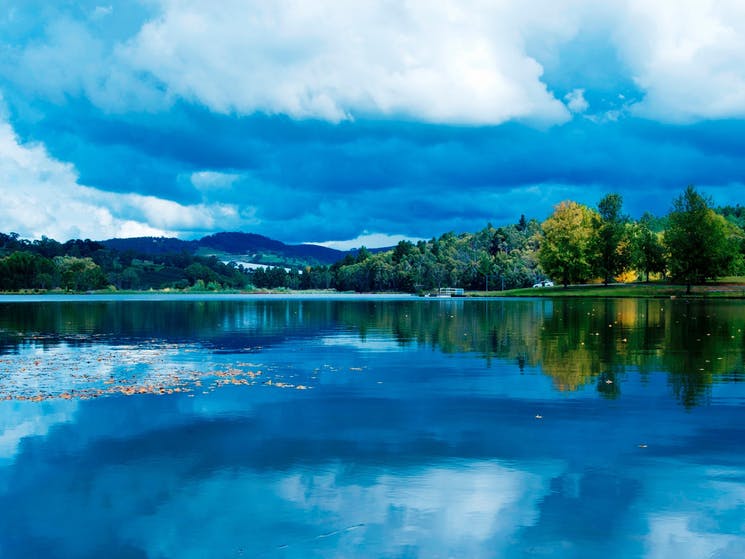Orange Chardonnay – the very cool new kid in town

If you were to ask a bunch of wine gurus (self-proclaimed or otherwise) where you’ll find the world’s best Chardonnay, I’m guessing that at least eight out of ten will tell you that you’d need to travel to Burgundy in France and visit a sub-region like Chablis or Côte de Beaune. Others may well say it’s the AOC of Montrachet or somewhere within the Côte-d’Or in north-eastern France. But one thing is for sure; few would put on their list an Australian district – least of all one within the high country in New South Wales.
Australian wine-producing regions are well regarded across the globe for quality and value and that includes our notable Chardonnay growing areas within South Australia, Victoria and Western Australia. If you were to take a poll of Australian wine experts, I suspect that most would say that our premiere Chardy regions are Margaret River, Adelaide Hills, Mornington Peninsula and the Yarra Valley – and that’s probably unkind to Great Southern, which, is itself a Chardonnay producer on the rise! This may be a big call, and one which might send me to my grave with egg on my face, but I’m confident that within a decade we’ll be talking about the Orange region in the Central Ranges District in NSW as being one of Australia’s Top three Chardonnay producing regions.
The Orange region is a babe in the woods compared to other domestic growing districts. It was only in about 1980 that vines started to be planted and to this day there are still only about 60 vineyards and wineries in the locale. The region around Mount Canobolas is the highest of the Central Ranges districts (which include Mudgee, Cowra and Orange) with plantings at elevations of between 600m and 1,000m. Best of all, the terroir is diverse with a range of different soils, topography, climate and aspect. In such elevated and cool regions, site selection is paramount as sun exposure is critical in the all-important ripening period – but around Orange, the contemporary winemakers have been judicious in their (generally north to westerly) orientation of vineyards.
Another big plus for the local vignerons is that the soils are largely basalt based thanks to the ancient volcano that Mount Canobolas once was – but there are also outcrops of limestone, shale and slate which add interest to the end result of the grower’s labours. Best of all, the large diurnal temperature range (difference between minimum and maximum each day) allows full ripeness of the fruit without losing the vitality and freshness of good acidity. It’s hard to imagine a better place to create Chardonnay of elegance, balance and finesse. But the very imagination of one of the pioneers of the Orange cool climate wine industry, twice-named International Winemaker of the Year, Philip Shaw, brought him to plant his Koomooloo vineyard at Orange in 1989. And perhaps this sparked the start of the new confidence in a region that, until then, only boasted growing apples and cherries.
Wine consumers seem to finally be able to forgive the rich, ripe and over-oaked Chardonnay styles of the 1980’s and 90’s and the “Kath and Kim” era. Sadly, these flabby and mouth blowing styles over-egged the sponge cake and turned away consumers in droves. Pleasingly, cooler climate examples are growing in popularity due to exceptional fruit, restrained winemaking, better balance and an obvious age-worthiness – and I reckon the Orange based winemakers are doing it as well as anyone in the country.
Most of us have encountered the Phillip Shaw range of wines in bottleshops, restaurants and licensed venues. Under the tutelage of winemaker, Daniel Shaw, the brand has become the biggest of the region; and they do an outstanding No 11 Chardonnay ($35) – which at the moment is hard to get your hands on due to there being no 2020 vintage.
But for me, the elegant and sophisticated style of the Patina 2018 Reserve Chardonnay ($40) is a winner. A wine which shows peach, honey dew and nectarine characters up front but finishes with a lees infused creaminess and generous length. There’s ample acid to convince me that I can comfortably lay it on its side for five to ten years but it’s drinking brilliantly right now in its youth.
Other Orange Chardies to look out for include Angullong’s Fossil Hill Chardonnay, the Canobolas Smith Shine chardonnay (exceptional but hard to find) and the Swinging Bridge Hill Park flagship.
I strongly suspect that in Orange, Sauvignon Blanc, Pinot Gris and Riesling will have to play second fiddle to the alpha personality of Chardonnay as the profile of the region grows. And who knows, perhaps one day the elite Chardonnay du Monde judges will announce a winner from the basalt-based soils of Mount Canobolas? I guess only time will tell whether my prediction of Orange chardonnay dominance is to be Nostradamus-like; or akin to the wildly failed forecasts of the Y2K proponents!